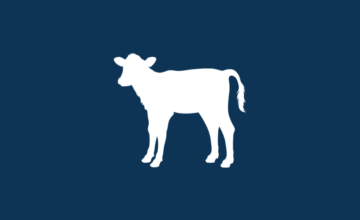Reducing Abomasal Bloat in Artificially Raised Lambs
- Jul 09, 2024
- By Grober Nutrition
- In Canada
Abomasal bloat in lambs, also known as typhany, is a major issue in lambs that often results in death.
What is abomasal bloat?
Some farms have reported having only sporadic incidences of bloat, while others have seen up to a 30% death loss in lambs under 4 weeks of age. While abomasal bloat is mainly a problem in lambs under 2 months of age, it may occur in older animals, especially when being fed milk or milk replacer for a longer period. Abomasal bloat is believed to be caused by an overgrowth of bacteria in the abomasum because of delayed abomasal emptying. These bacteria ferment the available sugars in the stomach resulting in excess gas production. Since this gas has nowhere to escape, the abomasum becomes bloated and often results in death. Signs of small preweaning ruminants with abomasal bloat include swollen stomachs, lethargy, colic, and teeth grinding. Some have also reported kicking at their bellies. While there are some treatment interventions available, most are unsuccessful. The key to reducing abomasal bloat is to focus on prevention rather than mitigation.
Preventing bloat in lambs
The best method to reduce the incidence of abomasal bloating in your flock is to work on prevention. A goal to strive towards is encouraging more frequent, smaller meals. When there is too much time between feedings, the abomasum becomes much more acidic. When the abomasum becomes acidic, this provides the perfect environment for bacteria to rapidly multiply. One method of prevention to start with is ensuring your milk replacer is mixed well and according to the bag instructions. When the milk replacer is too diluted, lambs may gorge themselves when fed ad libitum.
Another recommendation is to allow milk to cool before feeding (down to 40°C) as cooler milk has been found to reduce intake, encouraging smaller more frequent meals. Colder milk also reduces the growth of Sarcina bacteria, a common microbe playing a role in bloat. Finally, allowing lambs to be fed through an automatic feeder or MOB system will allow lambs to eat smaller more frequent meals which results in less risk for over engorgement and bloat.
Acidification of milk replacer
Another method of prevention is to consider acidification of your milk or milk replacer. Adding an organic acid, typically formic acid, helps to keep the bacterial load low especially when milk is left out for free access feeding. Acidification also has other benefits including increased intake and decreased scouring. Acidification may also slightly reduce the pH in the abomasum resulting in increased digestibility of milk due to ease of clot formation and more stable pH long term. To learn more about the benefits of partially acidified milk replacer, check out our GroFact, What Does Partially Acidified Milk Replacer Mean?
In summary, the key steps to preventing abomasal bloat are:
- Cleanliness: ensure all feeding equipment is clean
- Avoid over feeding; minimizes overflow of milk into the rumen or milk sitting in the abomasum
- Check teat holes: larger holes allow gorging leading to digestive upset
- Mixing rates; weigh powders with a scale to ensure consistency
- Consider adding acidification to the milk or milk replacer
- Aim for smaller more frequent meals to reduce the opportunity for bacteria growth in the abomasum
- Hydration: provide free access to water. This helps with dehydration, and gives a break in milk supply, reducing the availability of sugars ready to be fermented
- Consult with your vet: if you are seeing increased incidences of abomasal bloat and death, consult with your veterinarian














